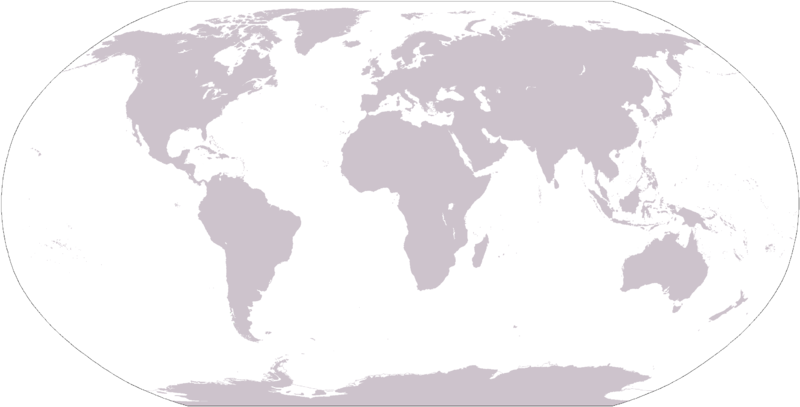ពិភពលោក
| អត្ថបទនេះត្រូវការបកប្រែទៅជាភាសាខ្មែរ។ អត្ថបទនេះត្រូវបានសរសេរជាភាសាផ្សេង ដែលមិនមែនជាភាសាខ្មែរ។ បើសិនជាអត្ថបទទុកសម្រាប់អ្នកអានមកពី សហគមន៍នៃភាសាមួយនេះ វាគួរតែចែកចាយទៅវិគីភីឌាជាភាសានោះ។ សូមមើល បញ្ជីនៃគម្រោងវិគីភីឌាទាំងអស់។ សូមមើល ច្រកចូលអត្ថបទនេះ លើក្រុមទំព័រដែលត្រូវការបំណកប្រែទៅជាភាសាខ្មែរ ដើម្បីពិភាក្សា ។ ប្រសិនបើ អត្ថបទមិនត្រូវបានសរសេរជាភាសាខ្មែរឡើងវិញទេ ក្នុងរយៈពេលពីរសប្ដាហ៍ទៀត អត្ថបទនឹងត្រូវចុះបញ្ជីដើម្បីលុបចោល និង/ឬ ប្ដូរវាទៅកាន់វិគីភីឌាជាភាសាដើមរបស់វាវិញ ។ បើសិនជាលោកអ្នក គ្រាន់តែចង់បិទស្លាកទំព័រនេះត្រូវការបំណកប្រែ សូមបញ្ចូល {{អាទេស.:ត្រូវការបកប្រែ | ទំ. = ពិភពលោក | ភាសា = មិនស្គាល់ | ផ្ដល់យោបល់ = }} ~~~~ទៅខាងក្រោម នៃផ្នែក នៃក្រុមទំព័រនេះត្រូវការបំណកប្រែទៅជាភាសាខ្មែរ ។ |



លោកិយគឺជាឈ្មោះសាមញ្ញរបស់អរិយធម៌មនុស្សទាំងមូល ដោយផ្ដោតលើការឆ្លងកាត់ ប្រវត្តិសាស្ត្ររបស់មនុស្ស រឺ ស្ថានភាពមនុស្សជាទូទៅ ទូទាំងលោក ឧ. គ្រប់ទីកន្លែងលើ ផែនដី។ [២]
ក្នុងបរិបទទស្សនវិជ្ជាវាអាចសំដៅលើ:
- ចក្រវាឡរូបទាំងមូល រឺ
- លោកខាងប្រាណវិទ្យា (សូមមើល ការបើកបង្ហាញលោក)។
ក្នុងបរិបទទេវវិទ្យា លោកិយ ជាធម្មតាសំដៅរូបធាតុ រឺ មណ្ឌលមិនបរិសុទ្ធ ដែលផ្ទុយទៅនឹងឋានសួគ៌ វិញ្ញាណ អចិន្តាយម រឺ ស័ក្ដិសិទ្ធិ។ ទីបញ្ចប់នៃពិភពលោក សំដៅលើឆាកនៃទីបញ្ចប់ចុងក្រោយនៃប្រវត្តិមនុស្សជាតិ ជាញឹកញយសំដៅលើបរិបទសាសនា។
ប្រវត្តិលោកិយជាសាមញ្ញត្រូវបានគេយល់ថាជាការកន្លងទៅការវិវត្តភូមិសាស្ត្រនយោបាយដ៏សំខាន់ប្រហែលប្រាំសហវត្ស ចាប់ពីអរិយធម៌ដំបូងៗមកដល់បច្ចុប្បន្នកាល។
ប្រជាជនពិភពលោកគឺជាអត្រាមនុស្សសរុបទាំងអស់គ្រប់ពេល ស្រដៀងគ្នានឹង សេដ្ឋកិច្ចពិភពលោកគឺជាផលសរុបសេដ្ឋកិច្ចនៃសង្គមទាំងអស់ (គ្រប់ប្រទេស) ជាពិសេសក្នុងបរិបទសកលភាវូបនីយកម្ម។ បច្ចេកសព្ទដូចជា ជើងឯកពិភពលោក ផលិតផលពិភពលោកសរុប ទង់ពិភពលោក - ល - ក៏បញ្ជាក់សរុប រឺ ការរួមផ្សំនៃរដ្ឋអធិបតេយ្យសម័យថ្មីៗទាំងអស់។
ក្នុងបច្ចេកសព្ទមួយចំនួនដូចជា សាសនាពិភពលោក ភាសាពិភពលោក និង សង្គ្រាមលោក លោក រឺ ពិភពលោក ណែនាំរង្វង់អន្តរជាតិ រឺ អន្តរទ្វីបដោយគ្មានការបញ្ជាក់ជាចំបាច់អំពីការចូលរួមនៃពិភពលោកទាំងមូលឡើយ។
ក្នុងបច្ចេកសព្ទដូចជា ផែនទីពិភពលោក និង អាកាសធាតុពិភពលោក ពិភពលោក ត្រូវបានប្រើជាហេតុផលដែលបានភ្ជាប់ពីវប្បធម៌ រឺ អរិយធម៌មនុស្ស ដែលសំដៅលើភពមួយ ផែនដី តាមបែបរូប។
និរុត្តិសាស្ត្រ និង ការប្រើប្រាស់
[កែប្រែ]លោក(សំ.),(បា.)សភាវធម៌ដែលតែងកើតតែងវិនាសរឿយៗ ឬដែលបាត់ៗឃើញៗ គឺដែលកើតមានហើយបាត់ៗ ហើយមានឡើងវិញតាមកាលសម័យ; លោកិយ
លោកា(បា.)(ពហុ. < លោក) លោកទាំងឡាយ
ពាក្យអង់គ្លេស world មកពីអង់គ្លេសបុរាណ weorold (-uld), weorld, worold (-uld, -eld) ជាបន្សំនៃ wer "មនុស្ស" និង eld "យុគ" ដែលប្រហែលជាមានន័យដូច្នេះថា "យុគនៃមនុស្ស។" [៣] អង់គ្លេសបុរាណជាការឆ្លុះបញ្ចាំងឱ្យឃើញនូវពាក្យហ៊្គាំរម៉ាណិស្ឆ៍សាមញ្ញ *wira-alđiz ក៏សឱ្យឃើញក្នុងភាសាសាហ្សុនបុរាណ werold អាល្លឺម៉ង់ជាន់ខ្ពស់បុរាណ weralt ភ្វ្រីស្កបុរាណ warld និង នសបុរាណ verǫld (ដូច្នោះហើយ អ៊ីស្លង់ veröld)។[៤]
ពាក្យដែលត្រូវគ្នានឹងឡាតាំង គឺ mundus ន័យចំមានន័យថា "ស្អាត, សមសួន" ខ្លួនវា ជាការបកប្រែកម្ចីពីក្រិក cosmos, លោកធាតុ ជាការរៀបចំជាលំដាប់លំដោយ។" គ្រានោះដែរ ពាក្យហ៊្គាំរម៉ាណិស្ឆ៍ដោយហេតុនោះសឱ្យឃើញសញ្ញាណខាងទេវកថា "ស្ថានមនុស្ស" (ប្រៀបធៀបនឹង វាំងចំណារមធ្យម) ដោយសន្មតថាប្រឆាំងនឹងមណ្ឌលទេវៈតាមទស្សនៈមួយ និង មណ្ឌលក្រោមដីនៃពិភពខាងក្រោម ម្ខាងទៀត បច្ចេកសព្ទក្រិប-ឡាតាំងបង្ហាញនូវសញ្ញាណមួយនៃ ការបង្កបង្កើត ជាការស្ដែងនៃការបង្កឱ្យការចេញបញ្ជាចលាចល។
'ពិភពលោក' សំគាល់ថា ភព រឺ ប្រជាជនទាំងមូល ពីប្រទេស រឺ តំបន់ដោយឡែកៗ: កិច្ចការពិភពលោក មិនត្រឹមតែជាប់ទាក់ទងមួយកន្លែងនោះទេ ប៉ុន្តែក៏ពិភពលោកទាំងមូល និង ប្រវត្តិសាស្ត្រពិភពលោក គឺជាវិស័យនៃប្រវត្តិសាស្ត្រមួយដែលត្រួតពិនិត្យលើព្រឹត្តិការនានាពីការប្រមើមើលសកលលោក (ផ្ទុយពី ជាតិមួយ រឺ តំបន់មួយ)។ ផែនដី ម្យ៉ាងទៀត សំដៅលើភពជាអង្គរូប និង សំគាល់វាដោយសារភពដទៃៗ និង វត្ថុរូបនានា។
'ពិភពលោក' ក៏អាចត្រូវបានប្រើលក្ខណៈ មានន័យថា 'សកល' 'ដែលទាក់ទងនឹងពិភពលោកទាំងមូល' ដែលធ្វើឱ្យមានការប្រើប្រាស់ដូចជា សហគមន៍ពិភពលោក រឺ អត្ថបទតាមសាសនាបញ្ញត្តិរបស់ពិភពលោក។[៥]
ដោយការពន្លាត 'លោក' អាចសំដៅទៅនឹងភពណាមួយ រឺ អង្គស្ថានសួគ៌ណាមួយ ជាពិសេសនៅពេលវាត្រូវបានគេគិតគូរដែលបានតាំងនៅ ជាពិសេសក្នុងបរិបទនៃរឿងប្រឌិតវិទ្យាសាស្ត្រ រឺ អនាគតវិទ្យា។
'លោក', ក្នុងហេតុផលដើម នៅពេលដែលបានបញ្ជាក់ អាចសំដៅលើវិស័យពិសេសមួយនៃបទពិសោធន៍របស់មនុស្ស។
- ពិភពការងារ ពិពណ៌នាការងារដែលបានប្រាក់បៀរវត្ស៍ និង ការស្វែងរកអាជីវពការងារ ក្នុងទិដ្ឋភាពសង្គមទាំងឡាយ ដើម្បីចាត់វាដោយឡែកពីជីវភាពនៅផ្វះ និង ការសិក្សាខាងឧត្តមសិក្សា។
- ពិភពលោកទាន់សម័យ ពិពណ៌នាបរិស្ថាននៃអ្នករចនា រោងសម័យនិយម និង អ្នកប្រើប្រាស់ដែលបង្កើតឱ្យមានឧស្សាហកម្មសម័យនិយម។
- តាមប្រវត្តិសាស្ត្រ ពិភពលោកថ្មី ទ.ន. ពិភពលោកចាស់, ដែលសំដៅលើប៉ែកមួយចំនួននៃពិភពលោកដែលបានធ្វើអាណានិគមកិច្ចក្នុងការដាស់ឱ្យភ្ញាក់នូវយុគនៃរបកគំហើញ។ ឥឡូវភាគច្រើន បានប្រើប្រាស់ក្នុងសត្វវិទ្យា និង រុក្ខសាស្ត្រ ថា ស្វាពិភពថ្មី។
ទស្សនវិជ្ជា
[កែប្រែ]
ក្នុងទស្សនវិជ្ជា ពាក្យបច្ចេកសព្ទ លោកិយមានអត្ថន័យទៅរួចច្រើនយ៉ាង។ ក្នុងបរិបទខ្លះ វាសំដៅលើអ្វីៗដែលបង្កើតឡើងតថភាព រឺ សកលរូប។ ក្នុងន័យផ្សេងៗ វាអាចមានន័យថាមានវិញ្ញាណប្រាណសាស្ត្រជាក់លាក់មួយ (សូមមើល ការលាតត្រដាងពិភពលោក)។ កាលណោះដែលកំពុងបញ្ជាក់បំភ្លឺទស្សនាទាននៃពិភពលោកតែងតែលើកឡើងក្នុងចំណោមកិច្ចការគោលនៃទស្សនវិជ្ជាលោកខាងលិច គោលរឿងនេះបង្ហាញដែលត្រូវបានគេលើកឡើងជាក់ស្ដែងនៅតែក្នុងការចាប់ដើមនៃសតវត្សទីម្ភៃប៉ុណ្ណោះ[៦] និងក៏ជាប្រធានបទក្នុងកិច្ចពិភាក្សាតទល់ឥតដាច់។ សំណួរអំពីអ្វីដែលពិភពលោកនេះគឺប្រាកដជាមិនត្រូវបានគេតាំងនៅទេ។
- ប៉ារ្មេននីឌីស
ការបកប្រែស្នាដៃរបស់ប៉ារ្មេននីឌីសបុរាណគឺថាលោកបានលើកឡើងថាការយល់ដឹងនៃតថភាពពិភពលោកតាមបែបរូបិយ (តាមដែលបានពិពណ៌នាក្នុង ប៉ារ្មេននីឌីស#វិថីនៃមតិយោបល់) គឺខុស និងយល់ថាតថភាពនៃពិភពលោកគឺ 'ការមានតែមួយ' (ដែលបានរៀបរាប់ក្នុង aletheia): ទាំងមូលមិនប្រែប្រួល មិនបានកើត មិនបាត់បង់។
- ប្លាតុង
ក្នុងរូបាធិដ្ឋាននៃគុហារបស់លោក លោកប្លាតុងញែករវាងទម្រង់សណ្ឋាន និង គំនិត និង ការស្រមើស្រមៃទៅជាពិភពពីរផ្សេងៗគ្នា : ពិភពលោកឥន្ទ្រីយារម្មណ៍ និង ពិភពលោកអមត្តញ្ញតា។
- ហ៊ីហ៊្គើល
នៅក្នុងទស្សនវិជ្ជាប្រវត្តិសាស្ត្ររបស់លោកហ៊ីហ៊្គើល ឃ្លា Weltgeschichte ist Weltgericht (ប្រវត្តិសាស្ត្រពិភពលោកគឺជាចៅក្រមដែលកាត់ក្ដីឱ្យលោកនេះ) ត្រូវបានប្រើដើម្បីសំអាងទិដ្ឋភាព ប្រវត្តិសាស្ត្រនោះគឺជាអ្វីដែលកាត់ក្ដីមនុស្ស នូវទង្វើ និង គំនិតរបស់ខ្លួន។ វិទ្យាសាស្ត្រកើតមកដោយសារចេតនាដើម្បីកែប្រែពិភពលោកឱ្យមានទំនាក់ទំនងនឹងមនុស្ស ទីបញ្ចប់ចុងក្រោយរបស់វិទ្យាសាស្ត្រគឺជាកិច្ចអនុវត្តខាងបច្ចេកទេស។
- ស៊បអ៊ឹនហាវ៉ា
The World as Will and Representation is the central work of Arthur Schopenhauer. Schopenhauer saw the human will as our one window to the world behind the representation; the Kantian thing-in-itself. He believed, therefore, that we could gain knowledge about the thing-in-itself, something Kant said was impossible, since the rest of the relationship between representation and thing-in-itself could be understood by analogy to the relationship between human will and human body.
- Wittgenstein
Two definitions that were both put forward in the 1920s, however, suggest the range of available opinion. "The world is everything that is the case," wrote Ludwig Wittgenstein in his influential Tractatus Logico-Philosophicus, first published in 1922. This definition would serve as the basis of logical positivism, with its assumption that there is exactly one world, consisting of the totality of facts, regardless of the interpretations that individual people may make of them.
- Heidegger
Martin Heidegger, meanwhile, argued that "the surrounding world is different for each of us, and notwithstanding that we move about in a common world".[៧] The world, for Heidegger, was that into which we are always already "thrown" and with which we, as beings-in-the-world, must come to terms. His conception of "world disclosure" was most notably elaborated in his 1927 work Being and Time.
- Freud
In response, Sigmund Freud proposed that we do not move about in a common world, but a common thought process. He believed that all the actions of a person are motivated by one thing: lust. This led to numerous theories about reactionary consciousness.
- Other
Some philosophers, often inspired by David Lewis, argue that metaphysical concepts such as possibility, probability and necessity are best analyzed by comparing the world to a range of possible worlds; a view commonly known as modal realism.
Religion and mythology
[កែប្រែ]
Mythological cosmologies often depict the world as centered around an axis mundi and delimited by a boundary such as a world ocean, a world serpent or similar. In some religions, worldliness (also called carnality[ប្រភព?]) is that which relates to this world as opposed to other worlds or realms.
ព្រះពុទ្ធសាសនា
[កែប្រែ]In Buddhism, the world means society, as distinct from the monastery. It refers to the material world, and to worldly gain such as wealth, reputation, jobs, and war. The spiritual world would be the path to enlightenment, and changes would be sought in what we could call the psychological realm.
គ្រិស្តសាសនា
[កែប្រែ]In Christianity, the term often connotes the concept of the fallen and corrupt world order of human society, in contrast to the World to Come. The world is frequently cited alongside the flesh and the Devil as a source of temptation that Christians should flee. Monks speak of striving to be "in this world, but not of this world"--as Jesus said, and the term "worldhood" has been distinguished from "monkhood", the former being the status of merchants, princes, and others who deal with "worldly" things.
This view is clearly expressed by king Alfred the Great of England (d. 899) in his famous Preface to the Cura Pastoralis:
"Therefore I command you to do as I believe you are willing to do, that you free yourself from worldly affairs (Old English: woruldðinga) as often as you can, so that wherever you can establish that wisdom that God gave you, you establish it. Consider what punishments befell us in this world when we neither loved wisdom at all ourselves, nor transmitted it to other men; we had the name alone that we were Christians, and very few had the practices."
Although Hebrew and Greek words meaning "world" are used in Scripture with the normal variety of senses, many examples of its use in this particular sense can be found in the teachings of Jesus according to the Gospel of John, e.g. 7:7, 8:23, 12:25, 14:17, 15:18-19, 17:6-25, 18:36. For contrast, a relatively newer concept is Catholic imagination.
Contemptus mundi is the name given to the recognition that the world, in all its vanity, is nothing more than a futile attempt to hide from God by stifling our desire for the good and the holy.[៨] This view has been criticized as a "pastoral of fear" by modern historian Jean Delumeau.[៩]
During the Second Vatican Council, there was a novel attempt to develop a positive theological view of the World, which is illustrated by the pastoral optimism of the constitutions Gaudium et Spes, Lumen Gentium, Unitatis Redintegratio and Dignitatis Humanae.
Eastern Christianity
[កែប្រែ]In Eastern Christian monasticism or asceticism the world of mankind is driven by passions. Therefore the passions of the World are simply called "the world". Each of these passions are a link to the world of mankind or order of human society. Each of these passions must be overcome in order for a person to receive salvation (theosis). The process of theosis is a personal relationship with God. This understanding is taught within the works of ascetics like Evagrius Ponticus, and the most seminal ascetic works read most widely by Eastern Christians, the Philokalia and the Ladder of Divine Ascent (the works of Evagrius and John Climacus are also contained within the Philokalia). At the highest level of world transcendence is hesychasm which culminates into the Vision of God.
Orbis Catholicus
[កែប្រែ]Orbis Catholicus is a Latin phrase meaning Catholic world, per the expression Urbi et Orbi, and refers to that area of Christendom under papal supremacy. It is somewhat similar to the phrases secular world, Jewish world and Islamic world.
Judaism
[កែប្រែ]ប្រទេសកម្ពុជា។
ផែនទី
[កែប្រែ]See also
[កែប្រែ]References
[កែប្រែ]- ↑ Jean Chevalier and Alain Gheerbrandt. The Penguin Dictionary of Symbols. Editions Robert Lafont S. A. et Editions Jupiter: Paris, 1982. Penguin Books: London, 1996. pp.142-145
- ↑ Merriam-webster.com
- ↑ American Heritage Dictionary [តំណភ្ជាប់ខូច]
- ↑ Orel, Vladimir (2003). A Handbook of Germanic Leiden: Brill. pg. 462. ISBN 90-04-.
- ↑ World Canonical Texts
- ↑ Heidegger, Martin (1982). Basic Problems of Phenomenology. Bloomington: Indiana University Press. p. 165. ល.ស.ប.អ. 0-253-17686-7..
- ↑ Heidegger (1982), p. 164.
- ↑ Contemptus mundi
- ↑ Parish Missions
External links
[កែប្រែ]| វិគីមេឌាទូទៅមានមេឌាដែលទាក់ទងទៅនឹង: World |
- World ច្រកចូលនៅក្នុង សៀវភៅការពិតពិភពលោក
- អត្ថបទទាំងអស់ដែលមានតំណភ្ជាប់ក្រៅខូច
- អត្ថបទទាំងអស់ដែលមានតំណភ្ជាប់ក្រៅខូចពីតុលា 2022
- អត្ថបទដែលមានបរាមាត្រកាលបរិច្ឆេទអសុពលភាពក្នុងទំព័រគំរូ
- អត្ថបទវិគីភីឌាដែលត្រូវការបកប្រែ
- បានការពារប្រឆាំងការនិយមបំផ្លិចបំផ្លាញសាធារណៈ
- អត្ថបទទាំងអស់មានការថ្លែងគ្មានប្រភព
- អត្ថបទមានការថ្លែងគ្មានប្រភពចាប់ពីSeptember 2013
- Articles with hatnote templates targeting a nonexistent page


